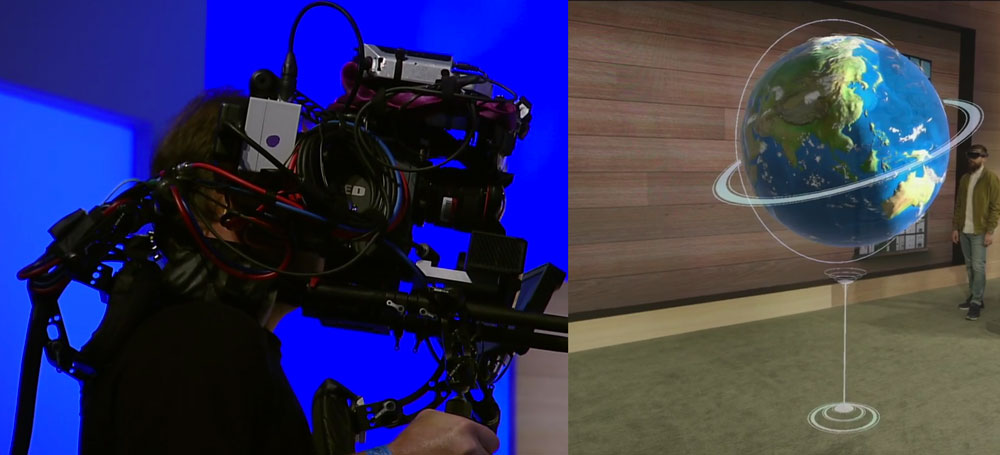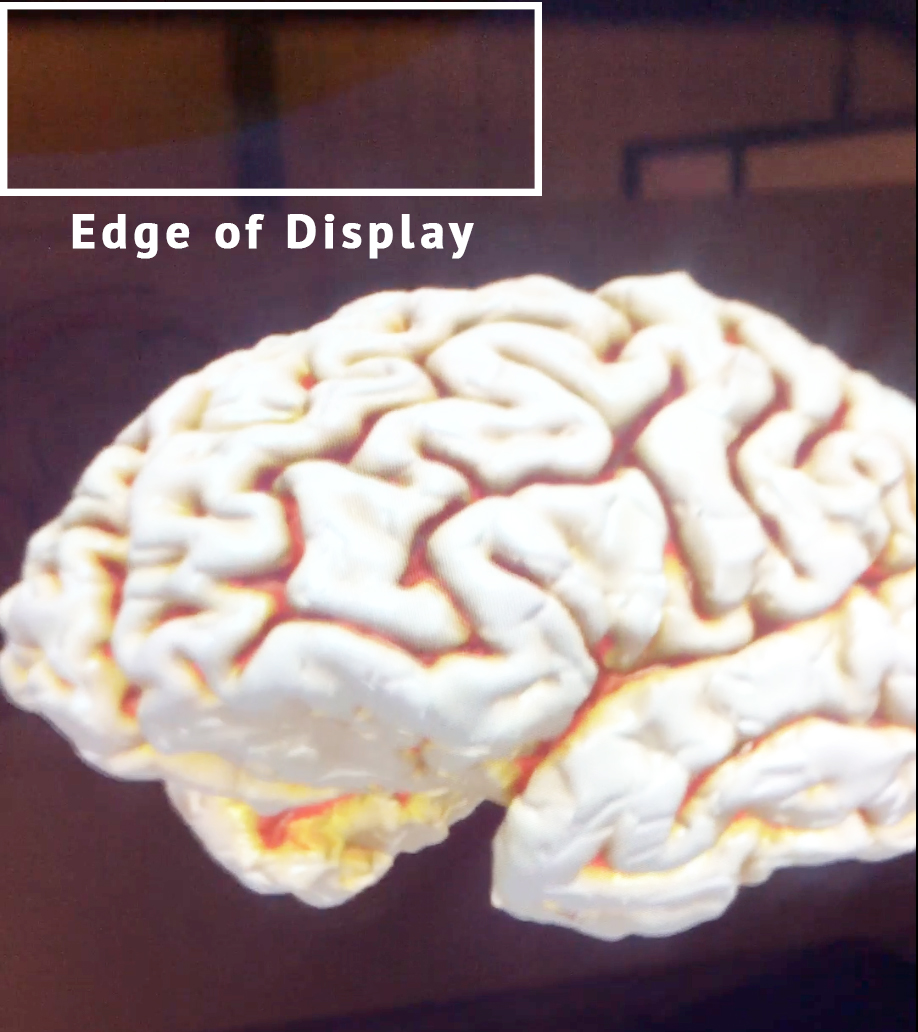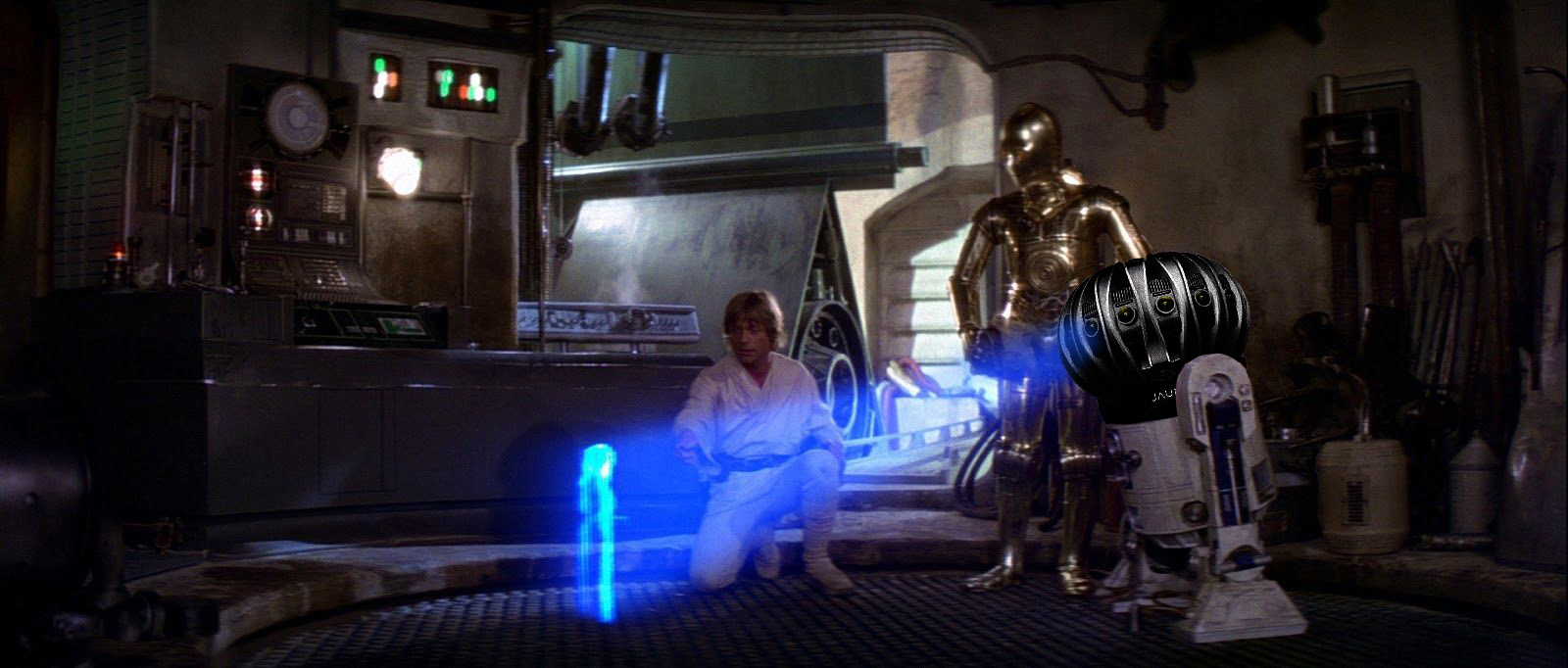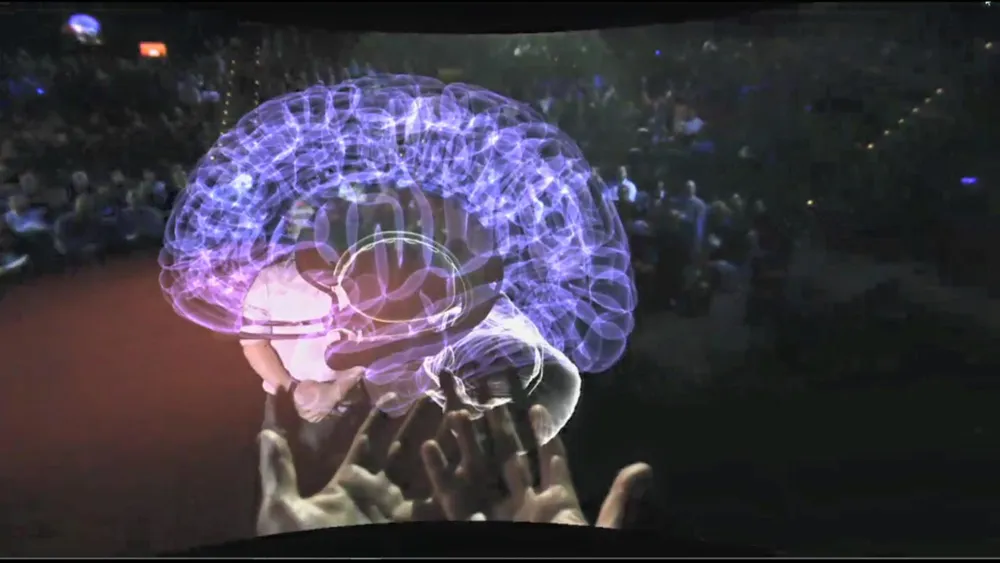The common perception is that augmented reality is a few years off from any sort of usability while virtual reality is the bleeding edge tech of today; Meta is seeking to change that perception with incredible video like this.
Provided by Meta exclusively for UploadVR, the above video was shot using an iPhone 6s pressed directly against the lens of a Meta 2 prototype allowing a bit of a glimpse into how it would look to peer directly through the glasses at a giant brain floating in front of you in the real world… i.e. pretty darn trippy.
The video showcases a hologram that appears to be at least as crisp as the images we have seen in both Microsoft’s videos for the HoloLens and Magic Leap’s “shot through Magic Leap” videos. However, unlike both of these cases, the candidness of this video from Meta required no special setup, nor planning and provides us with raw look at how the holograms appeared rendered to the user (or at least how they would appear to Blackbeard, to get a full representation you would need to shoot both eyes).

In Microsoft’s on stage demonstrations of the $3000 HoloLens developer kit the company has used a specially designed camera setup to show how the holograms look through the glasses. At least that is what Microsoft says. However, these demonstrations are called into question when one considers the device’s approximately 40º field of view, something we saw in our own hands on with the device. Meta’s video however shows the camera placed literally against the lens, there are no CG tricks here and from the looks of it in the video, Meta appears to have a larger field of view in comparison to HoloLens, something that could make it an attractive option to developers.

One thing you may notice in this video that is different from the one that Magic Leap has shown is that the image’s depth of focus does not appear to change. The entire time we look at the brain, even when it goes into the layered glass brain mode, we see a solid and in focus image. Magic Leap’s light field based display technology, however, allows for a change in that focus as demonstrated in the gif below – watch carefully as the camera shifts focus from the hologram in the foreground to the person in the background.
This is because of the major differences in the way that Meta and Magic Leap display images to the user. While Meta uses a display and reflected glass to project stereoscopic imagery, Magic Leap purports to use a new form of display technology that mimics the way an eye actually sees real objects allowing for true representation of depth. That said, only one of the two companies has actually publicly demonstrated their technology so far.
Meta debuted the Meta 2 on stage earlier this month at TED in Vancouver. Since the talk, the company’s website has displayed a counter counting down to March 2nd. According to our sources, the company plans to announce a shipping date for developer kits of the product, alongside specs and pricing on that day. The Meta 2 is rumored to be significantly less expensive than the HoloLens, which opened preorders today. Be sure to check back for our hands on impressions with the Meta 2 on Wednesday.

With the HTC Vive opening preorders today, the Oculus Rift shipping to consumers in a matter of weeks, and further news on PlaysStation VR expected at GDC, the year of consumer virtual reality is officially upon us, but videos like these show that AR might not be that far behind. Industry pundits are projecting that the AR market will eventually outpace the size of the VR market due to the number of every day real world use cases it will provide from changing the way we work to changing how we interact with the world around us.


























